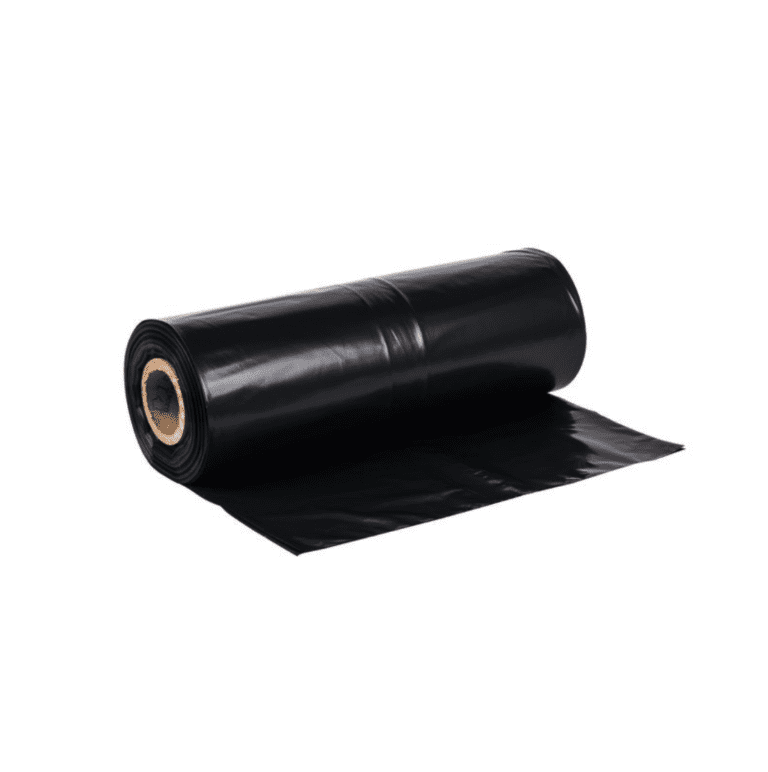It’s not exactly the sexiest topic in the world, but like it or not, bin liners play an essential part in any waste management strategy. Bin liners, also known as trash bags or garbage bags, are essential tools for waste management in homes, schools, offices, and public spaces. They serve several purposes, including containing waste, preventing odours, and making waste disposal more efficient and sanitary. Here’s everything you need to know about bin liners.
Bin Liner Basics
There are many brands and kinds of bin liners available on the market, but no matter the brand there are a few factors that must be considered when purchasing liners for your organisation.
Materials
Most bin liners are made from plastic, but the kind of plastic used can drastically change the strength behaviour and disposal of the liners.
- High-Density Polyethylene (HDPE): A lightweight, strong, and cost-effective material. HDPE is resistant to punctures and tears, making it suitable for dry waste. HDPE liners are often translucent and can hold a moderate amount of weight.
- Low-Density Polyethylene (LDPE): A thicker and more flexible than HDPE offers better stretchability and tear resistance, making it ideal for wet or heavy waste. LDPE liners are typically opaque.
- Biodegradable Plastics: Biodegradable bin liners are made from plastics that break down more quickly in the environment, such as those derived from plant-based sources. These liners are eco-friendly and reduce plastic pollution. However, they may have different performance characteristics compared to traditional plastics.
- Compostable Materials: Compostable bin liners are made from natural materials such as cornstarch or plant-based resins. They break down into non-toxic components that can be used in composting. Ideal for organic waste, they contribute to a circular waste management approach. Most compostable bin liners are suitable both home and commercial composting.
- Recycled Plastics: Made from post-consumer recycled materials, recycled plastic bin liners help reduce the demand for new plastics and lower carbon emissions associated with plastic production.
- Blends: Some bin liners use blends of different types of plastics or materials to achieve a balance between cost, strength, and environmental friendliness. Blended materials can offer a combination of properties such as strength, flexibility, and eco-friendliness.
Size
Bin liners come in various sizes to fit differently sized bins, from small under desk bins to large industrial containers. Ensuring that the liners you purchase are correctly sized for the bins you use is actually very important for a number of reasons, including:
- Ensuring Proper Fit: A liner that fits snugly in the bin helps keep it in place and prevents it from slipping or bunching up. This makes it easier to fill and remove the liner.
- Preventing Overfilling: A bin liner that is too small may not fully cover the interior of the bin, leading to overfilling and potential spillage. This can create messes and make waste disposal more challenging.
- Reducing Waste: Using a liner that is the correct size helps minimise the amount of unused material and reduces waste.
- Improving Hygiene: A properly sized bin liner covers the entire bin, protecting it from waste residue and spills. This helps keep the bin clean and reduces odours.
- Secure Tying: Liners that match the bin size can be filled without exceeding their capacity, making it easier to securely tie the bag and prevent waste from spilling out.
- Maintaining Structural Integrity: Overfilling a liner can cause it to stretch and tear, compromising its structural integrity. A well-fitting liner can handle waste more effectively and minimise the risk of breakage.
Thickness
The thickness of bin liners is measured in mils (thousandths of an inch) or microns. Thicker liners are more durable and can handle heavier waste.
- Light-Duty Liners (0.35–0.5 mil or 9–13 microns): Ideal for light waste such as paper, office waste, and small amounts of dry waste. Typically used in home waste baskets, office bins, and restrooms. These liners are typically more affordable but not suitable for heavy or sharp waste.
- Medium-Duty Liners (0.55–0.8 mil or 14–20 microns): Suitable for moderate amounts of waste, including kitchen and bathroom waste, and general garbage. Medium duty liners can typically handle light to moderate waste loads but may not withstand heavy or sharp waste.
- Heavy-Duty Liners (0.9–1.3 mil or 23–33 microns): Designed for heavier waste, including food waste, yard waste, and heavier items, heavy duty liners can handle more weight and resist punctures from sharp or bulky objects than lighter bin liners.
- Extra Heavy-Duty Liners (1.5–3 mil or 38–76 microns): Suitable for commercial and industrial waste, including construction debris and sharp objects, extra heavy duty liners offer high tear resistance and durability, making them ideal for heavy waste loads.
- Industrial-Grade Liners (3 mil and above or over 76 microns): Used for very heavy waste in industrial or commercial settings, such as large construction projects or manufacturing waste. These liners provide the highest durability and puncture resistance.
Colours
While most bin liners are black, white, or clear, they also come in different colours to assist with sorting waste and recycling. While some liners have novelty colours to brighten up an otherwise drab bin, most coloured bin liners are coloured to match the standardised waste streams in Australia. The most common liner colours are:
- Red Bin Liners: Used for general waste bins destined for landfill.
- Blue Bin Liners: Used for non-contaminated paper and cardboard waste.
- Yellow Bin Liners: Used for co-mingled recycling.
- Green Bin Liners: Used for organic waste. Green bin liners are commonly biodegradable.
Features
Depending on the brand, make and size of a bin liner, they may boast different features that can add to the functionality of the liner, such as:
- Drawstrings: Bin liners with built-in drawstrings allow you to easily tie and seal the bag once it is full. Drawstrings can also make it easier to remove the bag from the bin and carry it to the disposal location. They also provide a secure closure to prevent spillage.
- Wave Tops: Wave top bin liners feature a wavy top making them easy to tie closed.
- Flat Tops: Bin liners with a flat top have a straight opening without any specialized handles or drawstrings. These liners are typically simpler and more cost-effective. They can be easily sealed using a twist tie or a knot.
- Handles: Some bin liners have built-in handles for convenient carrying and disposal. The handles also make the liners easy to tie closed.
- Gusseted Sides: Gusseted sides allow the bag to expand and fit more closely to the shape of the bin. Providing a better fit increases the capacity of the bin liner.
- Scented Liners: Scented bin liners contain added fragrances to help mask unpleasant odours from waste. These liners can improve the overall experience of waste management by keeping odours under control.
- Tear and Puncture Resistance: Quality bin liners are designed to resist tears and punctures, especially when handling sharp or heavy items.
Choosing the Right Bin Liners
Choosing the right bin liner for an office or school is important for effective waste management and maintaining cleanliness. The following are some of the factors to consider when selecting the right bin liner for your organisation:
- Size and Capacity: Choose a bin liner that matches the size of the waste bins used in the office or school. Consider the volume of waste generated in different areas (e.g., classrooms, cafeterias, restrooms) and select a liner with a suitable capacity and features.
- Material: Decide between HDPE (high-density polyethylene) for lighter, dry waste and LDPE (low-density polyethylene) for heavier or wetter waste. Use biodegradable or compostable liners for organic waste or if environmental sustainability is a priority.
- Thickness: Select the appropriate thickness based on the type of waste generated. Light-duty liners may be suitable for paper and general waste, while heavy-duty liners are better for food waste and bulky items.
- Features: Consider using scented liners to mask odours in restrooms, kitchens or cafeterias. Select liners with reinforced edges or star seals for added strength and leak prevention, especially for heavy or wet waste.
- Colour or Transparency: Choose clear liners if you need to visually inspect the contents, or opaque liners for general waste or sensitive materials to maintain privacy. Using bin liners coloured to match typical waste sorting bin colours (red, yellow, blue and green) can help identify tied waste at a glance making sending it to the correct waste facility easy.
- Cost and Budget: Consider the cost of bin liners and find a balance between quality and budget. Bulk purchasing can help save costs, but ensure the liners meet your specific needs.
- Environmental Considerations: Choose liners made from recycled materials or with recycled content to support sustainability goals. Use compostable liners for organic waste if composting facilities are available.
By taking these factors into account, you can choose the right bin liner for the waste generated in your organisation. Having the right bin liner ensures efficient waste management and contributes to a cleaner, more organised space.

